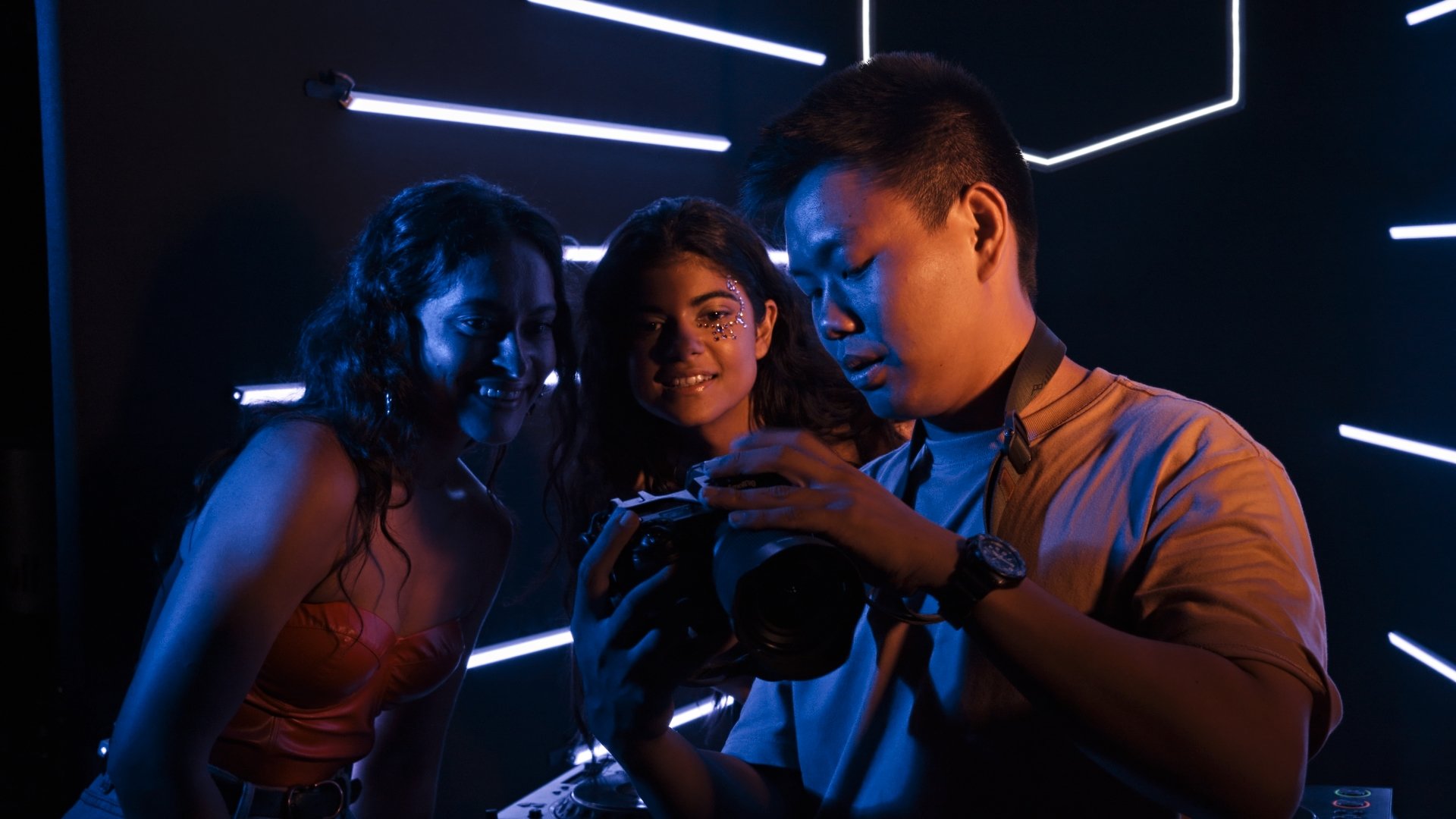
Photography art is a distinctive form of creative expression that uses the camera not merely as a tool, but as an instrument of storytelling and emotional exploration. The fusion of technical skill and artistic vision in photography art allows artists to capture fleeting moments, immortalize memories, and convey deep messages through images. Photography has long been celebrated for its ability to capture reality, but as an art form, it goes beyond documentation to evoke emotion, challenge perceptions, and reveal truths.
The Power of Photography Art
Photography art holds a unique position in the world of visual arts. Unlike traditional paintings or sculptures, photography allows the artist to capture real-life moments, preserving them for eternity. However, as an art form, it doesn’t just reflect reality—it can transform it. The interplay of light, shadow, composition, and perspective turns everyday scenes into striking works of art, offering viewers new ways to interpret the world.
- Emotional Expression:
One of the defining features of photography art is its ability to evoke emotions. A single photograph can stir joy, sadness, nostalgia, or wonder. The photographer’s choice of subject, lighting, and framing has the power to connect with viewers on a deeply emotional level, creating a sense of intimacy or awe. In many ways, photography distills human experiences into moments that transcend words. - Capturing Stories:
Photography art is fundamentally about storytelling. Each photograph, whether a portrait, landscape, or abstract composition, tells a story. It might convey the quiet beauty of a rural scene, the chaos of a bustling city, or the personal narrative of a subject’s life. Through a lens, photographers craft visual narratives that encourage viewers to pause, reflect, and engage with the story behind the image. - Challenging Perspectives:
Through the lens of the camera, familiar subjects can take on entirely new meanings. Photography art allows artists to challenge the viewer’s perception of ordinary objects, environments, and people. By playing with angles, lighting, and framing, photographers can transform the mundane into the extraordinary. This ability to reshape perceptions is what gives photography art its transformative power.
The Techniques Behind Photography Art
At its core, photography art is a balance of technical skill and creative intuition. Photographers manipulate various elements to create an image that speaks to the viewer. Mastery over the technical aspects of photography—such as exposure, focus, and composition—allows the artist to execute their creative vision effectively.
- Composition:
The arrangement of elements within the frame is one of the most critical aspects of photography art. Composition is about choosing what to include and exclude in the image, and how to balance visual elements to lead the viewer’s eye across the photograph. The rule of thirds, symmetry, and leading lines are common compositional techniques used to create a visually appealing and dynamic image. - Lighting:
Light is often referred to as the “paintbrush” of the photographer. The way light interacts with a subject can drastically change the mood, texture, and depth of an image. Photography art often plays with different types of lighting—whether it’s natural, artificial, or manipulated—to convey the desired emotional tone. Dramatic shadows, soft glows, or high-contrast highlights can each evoke different feelings in the viewer. - Color and Contrast:
Color plays a pivotal role in photography art, helping to set the tone and create mood. Photographers use color to invoke specific emotions, with warm tones often suggesting comfort or passion, and cool tones evoking calm or sadness. The contrast between light and dark areas within a photograph also contributes to its visual impact, drawing attention to key elements and enhancing texture. - Focus and Depth:
Selective focus is a key tool in photography art, allowing the artist to highlight a particular subject or detail while blurring out the background. This technique, known as depth of field, helps isolate the subject and create a sense of intimacy or importance. Shallow depth of field is often used in portrait photography to keep the subject sharp while softening the surroundings.
Genres of Photography Art
The beauty of photography art lies in its versatility. Photographers can specialize in various genres, each with its own unique approach, techniques, and subject matter. Some of the most celebrated genres of photography art include:
- Portrait Photography:
Portraits are a powerful form of photography art that captures the personality, emotion, and character of an individual. Photographers use various techniques such as lighting, composition, and focus to convey a subject’s essence. A well-executed portrait can reveal much more than just physical appearance—it can communicate the subject’s inner world. - Landscape Photography:
Landscape photographers use photography art to capture the natural beauty of the environment. Whether it’s a sweeping vista, a close-up of a single flower, or a stormy sky, landscape photography offers a window into the world’s diverse landscapes. Through composition and lighting, photographers highlight the grandeur or subtlety of nature. - Documentary Photography:
Documentary photography art tells real-life stories, often with a focus on social issues, human rights, or cultural events. The aim is not only to capture events as they unfold but also to shed light on important issues and provoke thought. Documentary photography is often raw and unposed, capturing real moments in time that reveal the truth behind the surface. - Street Photography:
Street photography explores the vibrancy and spontaneity of urban life. In this genre, photographers capture everyday moments, candid interactions, and the hidden beauty of city streets. Photography art in street photography often showcases contrasts, textures, and unique compositions that might go unnoticed by the casual observer. - Fine Art Photography:
Fine art photography blends artistic vision with technical mastery to create images meant to be appreciated for their aesthetic value. These photographs often explore abstract concepts, patterns, and the beauty of form. Fine art photographers push boundaries, experimenting with lighting, composition, and subjects to create visually striking images that stand alone as works of art.
The Impact of Technology on Photography Art
Advances in technology have had a profound impact on photography art, providing artists with new tools to enhance their work. Digital cameras and editing software have expanded the creative possibilities for photographers, allowing them to manipulate images in ways that were once impossible with film. The digital revolution has also made photography more accessible, allowing anyone with a smartphone to capture moments and explore artistic potential.
However, with the ease of digital manipulation comes a new set of challenges. Many photographers strive to maintain the integrity of their art, choosing to avoid over-editing and to preserve the authenticity of their images. Despite these challenges, technology has undoubtedly played a crucial role in democratizing photography art, enabling new voices and fresh perspectives to emerge.
Conclusion
Photography art continues to be a powerful and evolving medium, offering limitless opportunities for creative expression. It captures moments in time, evokes emotions, and tells stories that resonate with viewers long after the image is seen. Through careful composition, innovative techniques, and the artist’s unique perspective, photography art transforms the ordinary into the extraordinary, providing a timeless way to connect with the world. As technology continues to evolve, the boundaries of what is possible in photography art will expand, ensuring that this dynamic form of expression remains a vital part of the artistic landscape.
